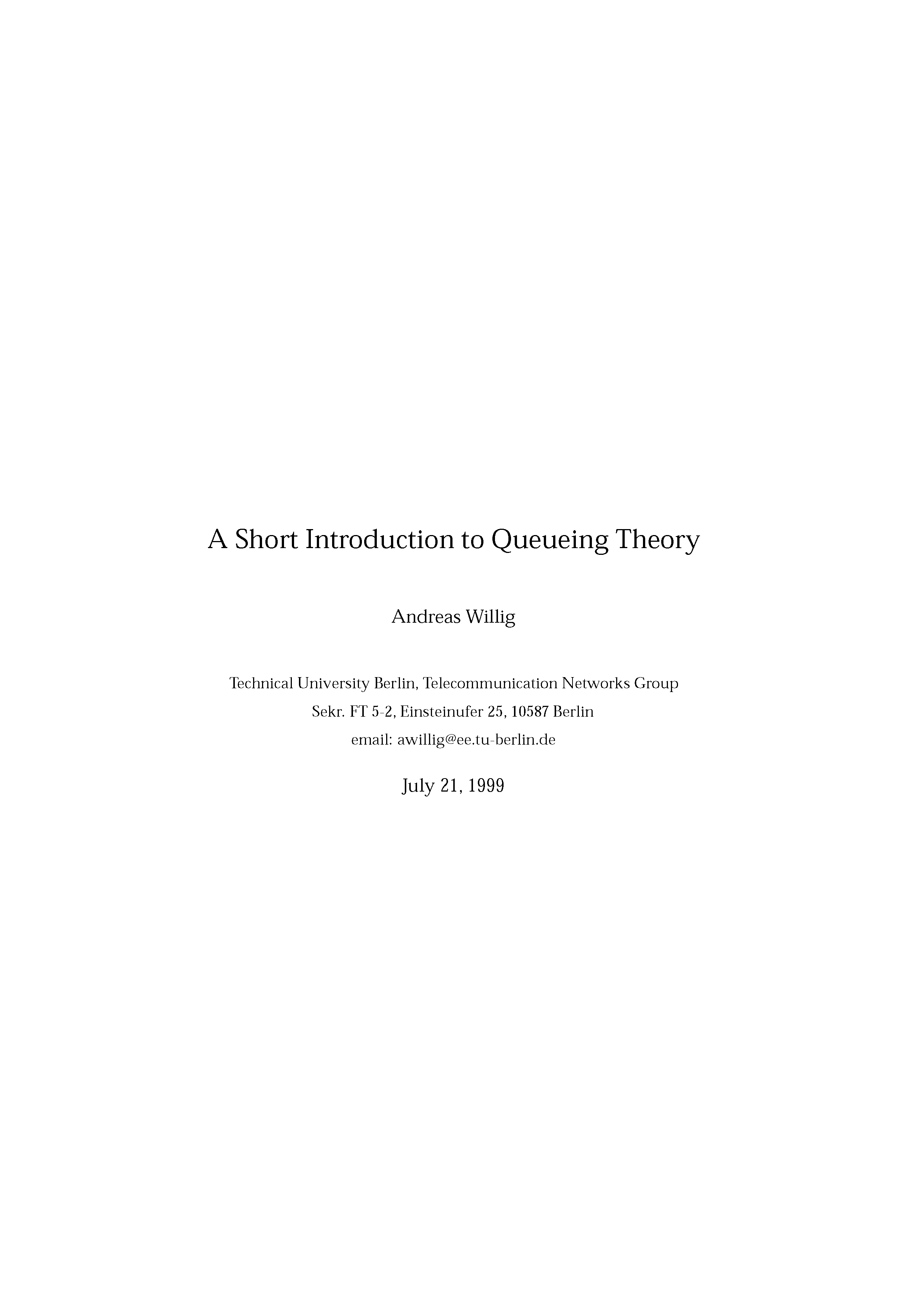
A Short Introduction to Queueing Theory
This document covers the most important queueing systems with a single service center. Only some basics are mentioned for queueing networks.
Tag(s): Operations Research
Publication date: 21 Jul 1999
ISBN-10: n/a
ISBN-13: n/a
Paperback: 42 pages
Views: 34,306
Type: N/A
Publisher: n/a
License: n/a
Post time: 01 Jan 2007 11:27:07
A Short Introduction to Queueing Theory
 This document covers the most important queueing systems with a single service center. Only some basics are mentioned for queueing networks.
This document covers the most important queueing systems with a single service center. Only some basics are mentioned for queueing networks.
Publication date: 21 Jul 1999
ISBN-10: n/a
ISBN-13: n/a
Paperback: 42 pages
Views: 34,306
Document Type: N/A
Publisher: n/a
License: n/a
Post time: 01 Jan 2007 11:27:07
This document is intended to be a short introduction to the field of queueing theory, serving as a module within the lecture Leistungsbewertung von Kommunikationsnetzen of Prof. Adam Wolisz from the Telecommunication Networks Group at Technical University Berlin. It covers the most important queueing systems with a single service center, for queueing networks only some basics are mentioned. This script is neither complete nor error free.
In this script most of the mathematical details are omitted, instead often "intuitive" (or better: prosaic) arguments are used. Most of the formulas are only used during a derivation and have no numbers, however, the important formulas are numbered. The author does not annotate all statements with a reference, since most of the material can be found in the standard literature.
Introduction:
Queueing Theory tries to answer questions like e.g. the mean waiting time in the queue, the mean system response time (waiting time in the queue plus service times), mean utilization of the service facility, distribution of the number of customers in the queue, distribution of the number of customers in the system and so forth. These questions are mainly investigated in a stochastic scenario, where e.g. the interarrival times of the customers or the service times are assumed to be random.
Prerequisites:
The study of queueing theory requires some background in probability theory. Two modern introductory texts are Probability, Stochastic Processes, and Queueing Theory and A First Course In Probability, two really nice "classic" books are An Introduction to Probability Theory and Its Applications, Volume I and II.
Tweet
About The Author(s)
Andreas Willig is an Associate Professor in the Department of Computer Science and Software Engineering at the University of Canterbury, New Zealand. His main research interest is in the design and performance evaluation of architectures and protocols for packet-oriented networks, especially in the areas of wireless networks, wireless sensor networks and body area networks, urban networks, smart cities, and (wireless) real-time and embedded networks.

Andreas Willig is an Associate Professor in the Department of Computer Science and Software Engineering at the University of Canterbury, New Zealand. His main research interest is in the design and performance evaluation of architectures and protocols for packet-oriented networks, especially in the areas of wireless networks, wireless sensor networks and body area networks, urban networks, smart cities, and (wireless) real-time and embedded networks.